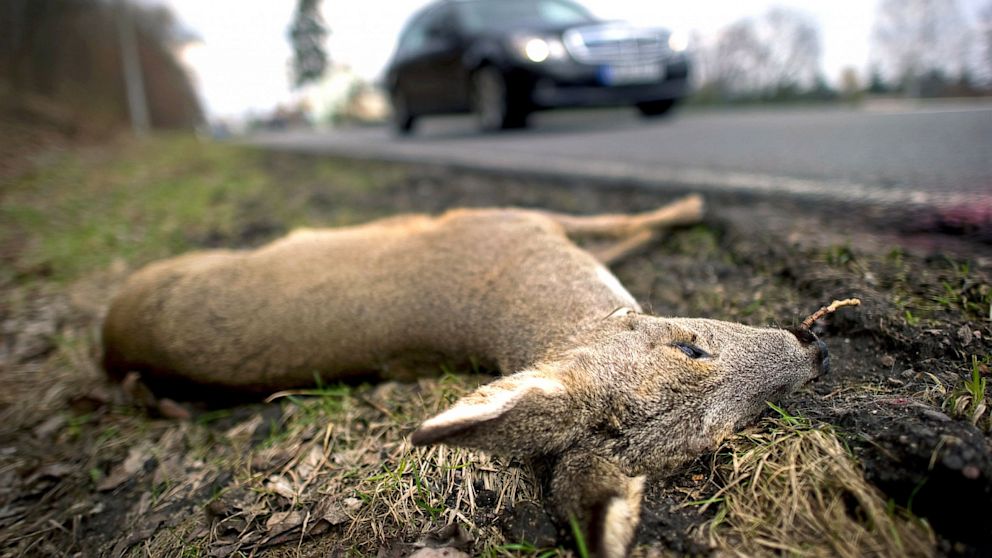Highway Slaughter: Germany's New Anti-Roadkill Offensive
Every year, hundreds of thousands of wild animals die on German roads.

July 21, 2013— -- Every year, hundreds of thousands of wild animals die on German roads. Now scientists are studying new ways to prevent deer, boar and other creatures from being run over.
Bertram is dead. The roe buck was hit by a car on the L 95, a regional road near Willstätt in the southwestern state of Baden-Württemberg. The same thing happened to fellow deer Charlotte and Norbert. In the space of 14 months, Jutta, a doe, crossed the heavily traveled L 85, near the town of Bühl, more than 1,000 times -- accident-free. But then she too was hit.
Falko Brieger and Max Kröschel, two forest managers from the city of Freiburg, have affixed bright yellow GPS receivers to 45 deer. Once a week, the scientists drive from the Baden-Württemberg Forestry Testing and Research Institute to their test regions and read the movement data from the GPS collars. They want to know how often animals like Bertram, Norbert, Charlotte and Jutta head towards the road. What is their range? How often do they cross the road? And how -- and this is the most important question for the researchers -- can they be prevented from running blindly onto county, regional and federal roadways?
Germany's Roadkill Epidemic
A car smashes into a wild animal on a German road over one million times a year. Collisions with foxes, badgers and rabbits rarely cause significant harm, at least to drivers and passengers. But collisions with deer and wild boar or, as was the case on Berlin's Ring Road last September, with a stately elk, can kill drivers.
There were approximately 200,000 accidents involving collisions with wild animals in 2012. They claimed 20 lives, seriously injured 615 people and caused about half a billion euros in insurance losses. According to horrific statistics compiled by hunters, about 20 percent of the wildlife killed throughout Germany each year is so-called roadkill, dispatched by the radiator of a speeding car instead of a hunter's gun.
In some regions, such as the heavily forested Waldeck-Frankenberg administrative district in the western state of Hesse, surprise encounters between wildlife and vehicles already account for a third of all traffic accidents. When an animal steps onto the roadway in the dark, drivers often have little time to apply the brakes. "It stood there as if it had just been beamed down," recalls Werner Hankel, a businessman who killed a deer with his Audi one night on the B 252, a federal road between the towns of Twiste and Berndorf. The accident caused €5,000 ($6,500) in damage to his car.
Although some animals initially survive a crash, they often sustain serious injuries. When it happens at night in his district, forest ranger Gerhard Thomas receives a call from the police. Then Thomas, a hunter from Kleve in the Lower Rhine region, hitches a trailer to his car and drives to the accident site. "The worst thing is the curious onlookers," says Thomas, "the 'friends of Bambi' who want to take a deer with an open fracture to the vet." Forest rangers and tenant hunters -- hunters who have had a hunting license for at least three years -- are required to shoot seriously injured wildlife.
Cutting-Edge Anti-Collision Technology




